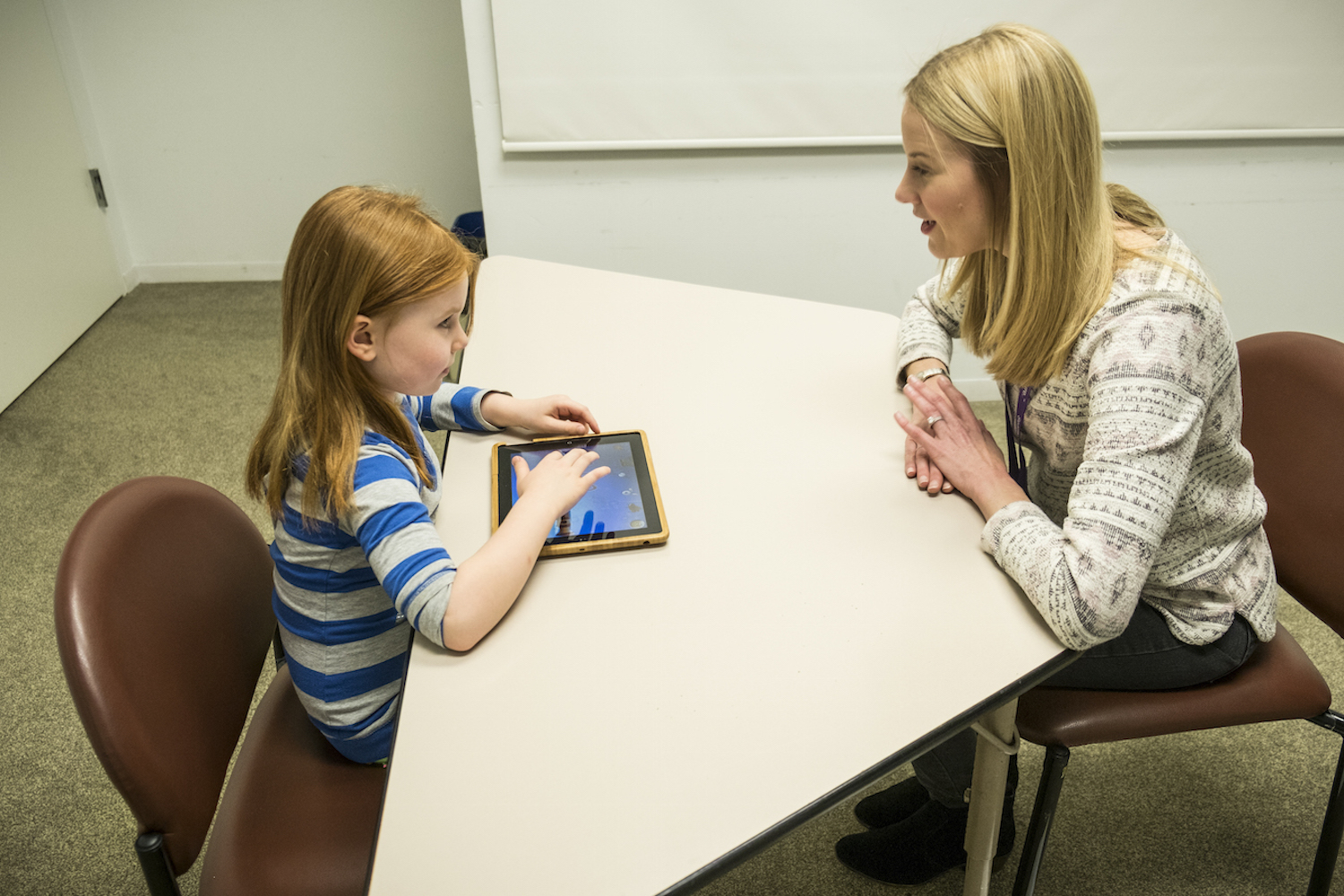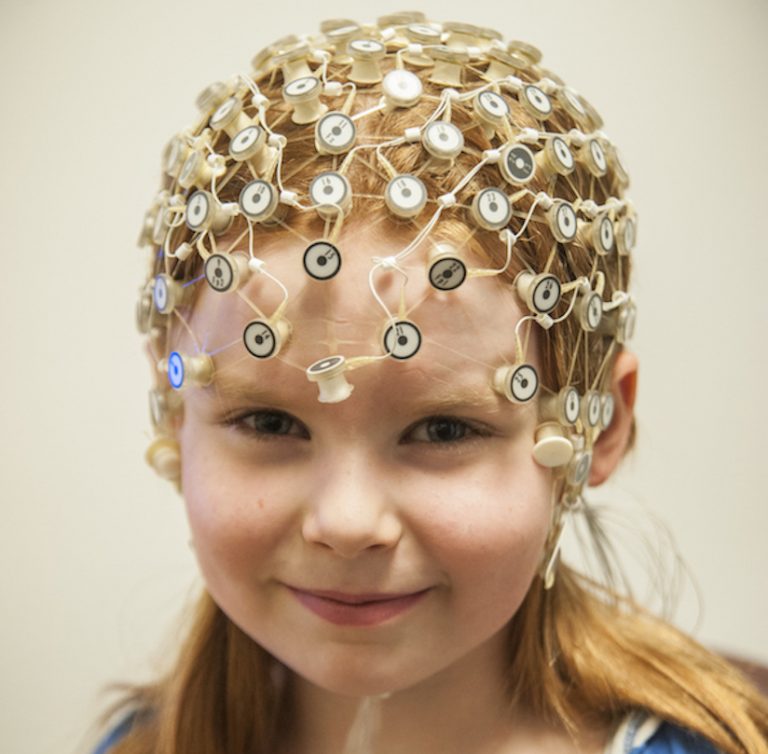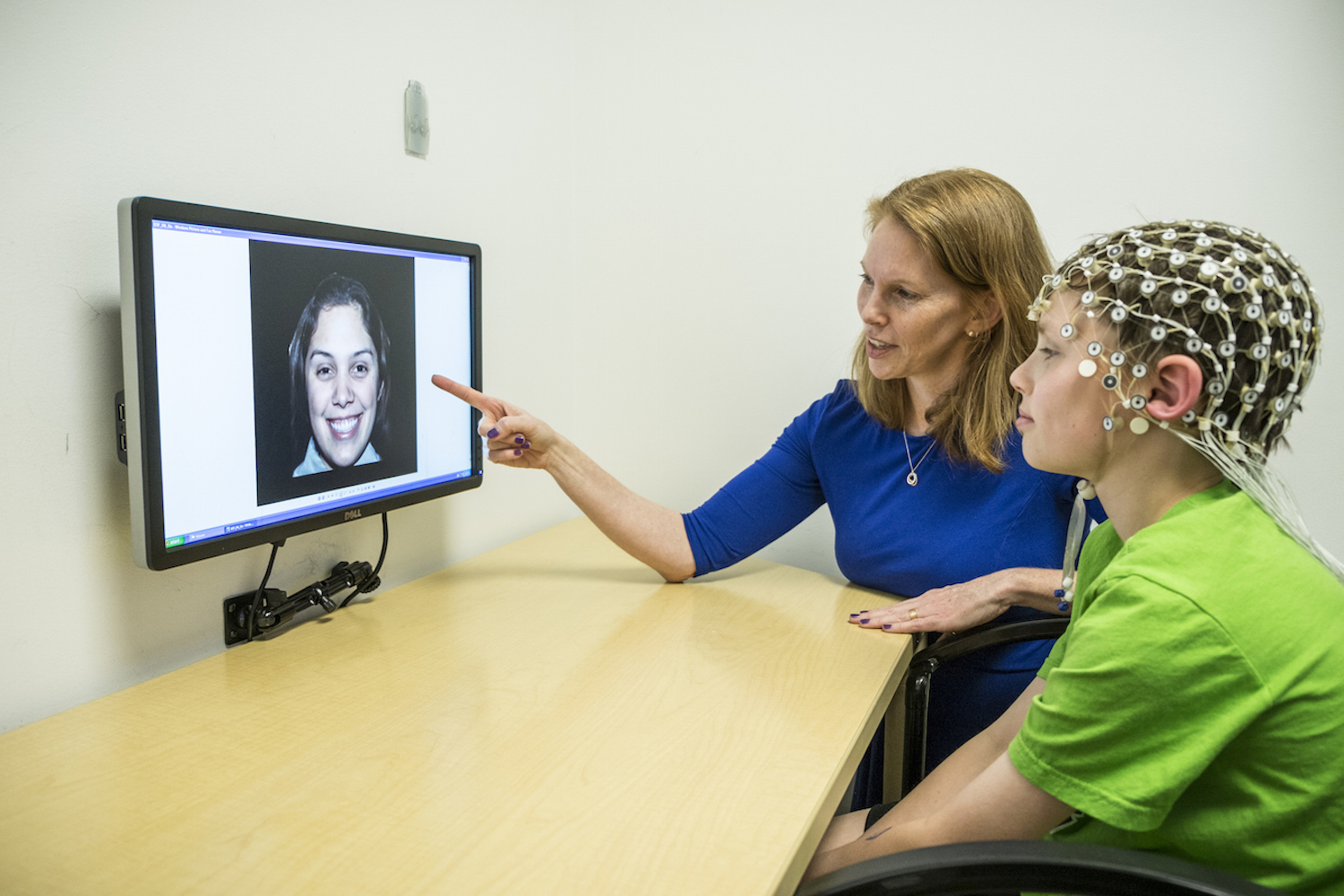Research Areas
At PBS Labs we conduct research in a number of different areas specifically targeted to investigate the etiology, course, and treatment of developmental disabilities such as Autism Spectrum Disorder (ASD). Click through the slider to find out more and learn about the studies in these areas you can participate in the Current Studies page.



Early Development
Developing clinical applications for our research is key element of our mission statement. Our work in this area ranges from developing methods of assessing understanding and progress in children with limited skills, to direct design and testing of interventions for developmental disabilities such as ASD. For example, we are currently using electrophysiological and cognitive neuroscience methods to test children with ASO who are involved in clinical trials of many intensive intervention programs.
This ongoing work will reveal whether early intervention can alter the trajectory of the cognitive and neural development in children with ASD. We are also involved in the design and evaluation of a number of more specifically targeted interventions for children with ASD. For example, in the work directed by Dr. Susan Faja, we designed and tested an intervention targeted at improving face recognition skills in a group of adults with ASD. In going work, we are evaluating the effects of a face recognition intervention for young children with ASD and difference types of early interventions.
As a member of the Autism Baby Siblings Research Consortium, our work hopes to “optimize neurodevelopment and wellbeing for infants at elevated likelihood for autism and their families.”
Clinical Applications
Developing clinical applications for our research is key element of our mission statement. Our work in this area ranges from developing methods of assessing understanding and progress in children with limited skills, to direct design and testing of interventions for developmental disabilities such as ASD. For example, we are currently using electrophysiological and cognitive neuroscience methods to test children with ASO who are involved in clinical trials of many intensive intervention programs.
This ongoing work will reveal whether early intervention can alter the trajectory of the cognitive and neural development in children with ASD. We are also involved in the design and evaluation of a number of more specifically targeted interventions for children with ASD. For example, in the work directed by Dr. Susan Faja, we designed and tested an intervention targeted at improving face recognition skills in a group of adults with ASD. In going work, we are evaluating the effects of a face recognition intervention for young children with ASD and difference types of early interventions.
Neural Processes
Developing clinical applications for our research is key element of our mission statement. Our work in this area ranges from developing methods of assessing understanding and progress in children with limited skills, to direct design and testing of interventions for developmental disabilities such as ASD. For example, we are currently using electrophysiological and cognitive neuroscience methods to test children with ASO who are involved in clinical trials of many intensive intervention programs.
This ongoing work will reveal whether early intervention can alter the trajectory of the cognitive and neural development in children with ASD. We are also involved in the design and evaluation of a number of more specifically targeted interventions for children with ASD. For example, in the work directed by Dr. Susan Faja, we designed and tested an intervention targeted at improving face recognition skills in a group of adults with ASD. In going work, we are evaluating the effects of a face recognition intervention for young children with ASD and difference types of early interventions.
Phenotyping & Endophenotyping
Examining the correlation between trains and genes can provide a precise strategy for characterizing genes that may be involved in the development of ASD. However, it is critical to move beyond evaluating clinically diagnostic symptoms of ASD, which are typical behaviors ‘macros’ that can be comprised of many underlying processes. Phenotypic evaluations use various methods to characterize the complex traits of individuals with ASD, providing more precise data for calculating genotype-phenotype correlations.
We use electrophysiology, cognitive neuroscience and the assessment of developmental trajectories to provide more detailed information about the behavior that contribute to ASD. This requires identifying heritable patterns of performance and collaboration with labs specializing in genetic analysis.
